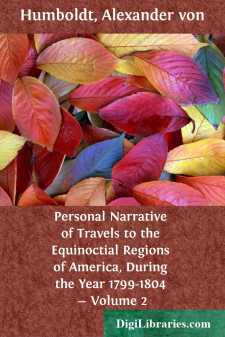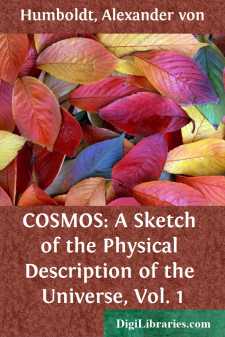Categories
- Antiques & Collectibles 13
- Architecture 36
- Art 48
- Bibles 22
- Biography & Autobiography 813
- Body, Mind & Spirit 142
- Business & Economics 28
- Children's Books 17
- Children's Fiction 14
- Computers 4
- Cooking 94
- Crafts & Hobbies 4
- Drama 346
- Education 46
- Family & Relationships 57
- Fiction 11829
- Games 19
- Gardening 17
- Health & Fitness 34
- History 1377
- House & Home 1
- Humor 147
- Juvenile Fiction 1873
- Juvenile Nonfiction 202
- Language Arts & Disciplines 88
- Law 16
- Literary Collections 686
- Literary Criticism 179
- Mathematics 13
- Medical 41
- Music 40
- Nature 179
- Non-Classifiable 1768
- Performing Arts 7
- Periodicals 1453
- Philosophy 64
- Photography 2
- Poetry 896
- Political Science 203
- Psychology 42
- Reference 154
- Religion 513
- Science 126
- Self-Help 84
- Social Science 81
- Sports & Recreation 34
- Study Aids 3
- Technology & Engineering 59
- Transportation 23
- Travel 463
- True Crime 29
Personal Narrative of Travels to the Equinoctial Regions of America, During the Year 1799-1804 - Volume 3
Description:
Excerpt
SPANISH GUIANA. ANGOSTURA. PALM-INHABITING TRIBES. MISSIONS OF THE CAPUCHINS. THE LAGUNA PARIME. EL DORADO. LEGENDARY TALES OF THE EARLY VOYAGERS.
I shall commence this chapter by a description of Spanish Guiana (Provincia de la Guyana), which is a part of the ancient Capitania general of Caracas. Since the end of the sixteenth century three towns have successively borne the name of St. Thomas of Guiana. The first was situated opposite to the island of Faxardo, at the confluence of the Carony and the Orinoco, and was destroyed* by the Dutch, under the command of Captain Adrian Janson, in 1579. (* The first of the voyages undertaken at Raleigh's expense was in 1595; the second, that of Laurence Keymis, in 1596; the third, described by Thomas Masham, in 1597; and the fourth, in 1617. The first and last only were performed by Raleigh in person. This celebrated man was beheaded on October the 29th, 1618. It is therefore the second town of Santo Tomas, now called Vieja Guyana, which existed in the time of Raleigh.) The second, founded by Antonio de Berrio in 1591, near twelve leagues east of the mouth of the Carony, made a courageous resistance to Sir Walter Raleigh, whom the Spanish writers of the conquest know only by the name of the pirate Reali. The third town, now the capital of the province, is fifty leagues west of the confluence of the Carony. It was begun in 1764, under the Governor Don Joacquin Moreno de Mendoza, and is distinguished in the public documents from the second town, vulgarly called the fortress (el castillo, las fortalezas), or Old Guayana (Vieja Guayana), by the name of Santo Thome de la Nueva Guayana. This name being very long, that of Angostura* (the strait) has been commonly substituted for it. (* Europe has learnt the existence of the town of Angostura by the trade carried on by the Catalonians in the Carony bark, which is the beneficial bark of the Bonplanda trifoliata. This bark, coming from Nueva Guiana, was called corteza or cascarilla del Angostura (Cortex Angosturae). Botanists so little guessed the origin of this geographical denomination that they began by writing Augustura, and then Augusta.)
Angostura, the longitude and latitude of which I have already indicated from astronomical observations, stands at the foot of a hill of amphibolic schist* bare of vegetation. (* Hornblendschiefer.) The streets are regular, and for the most part parallel with the course of the river. Several of the houses are built on the bare rock; and here, as at Carichana, and in many other parts of the missions, the action of black and strong strata, when strongly heated by the rays of the sun upon the atmosphere, is considered injurious to health. I think the small pools of stagnant water (lagunas y anegadizos), which extend behind the town in the direction of south-east, are more to be feared. The houses of Angostura are lofty and convenient; they are for the most part built of stone; which proves that the inhabitants have but little dread of earthquakes. But unhappily this security is not founded on induction from any precise data. It is true that the shore of Nueva Andalusia sometimes undergoes very violent shocks, without the commotion being propagated across the Llanos....




